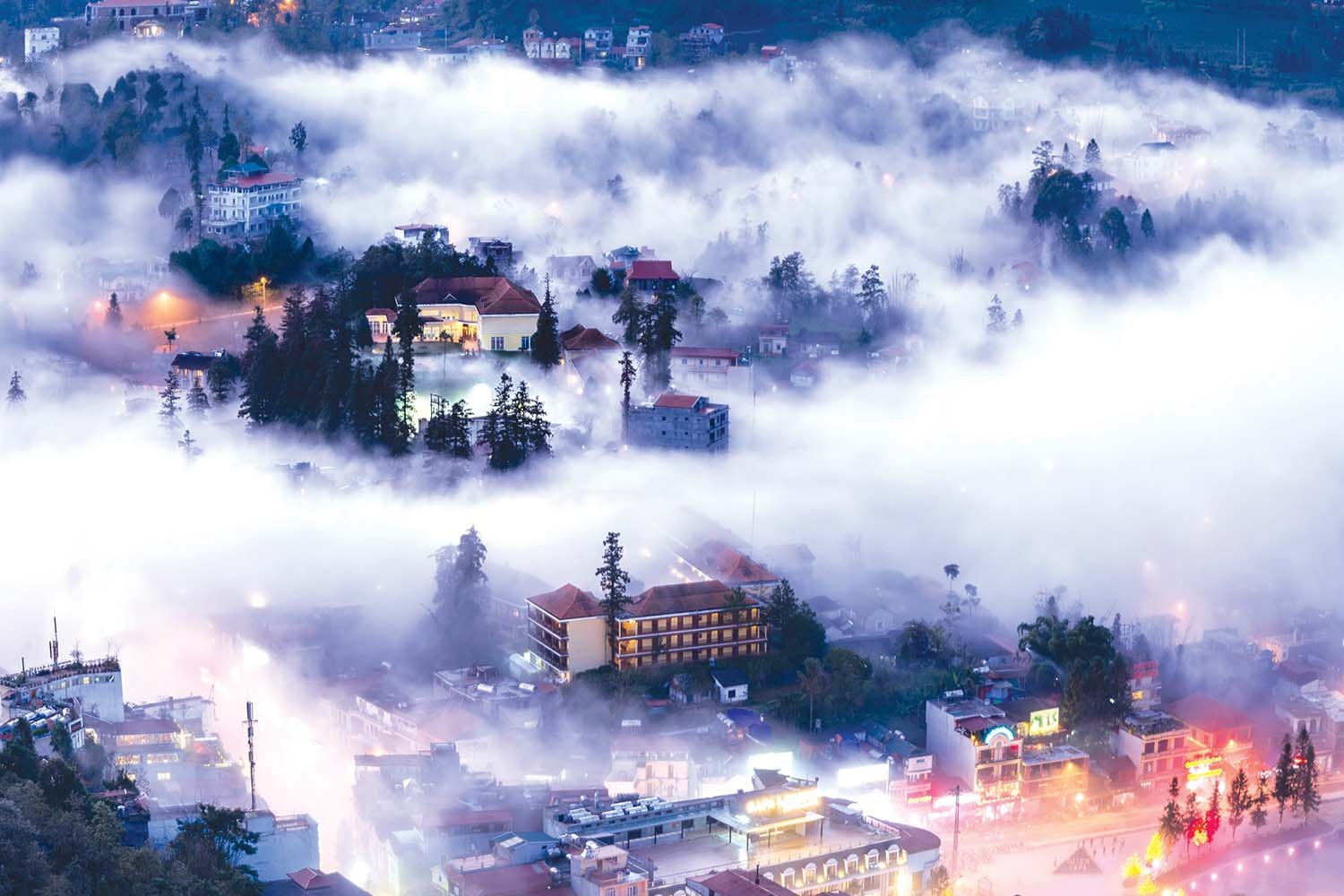Essential Insights into Hanoi’s Temple of Literature


Immerse yourself in the rich history and cultural heritage of Vietnam by visiting the Temple of Literature in Hanoi. This iconic landmark is a testament to the country’s profound reverence for education and scholarship. Let’s explore the significance and history of the Temple of Literature!
Table of contents
2. Exploring the Temple of Literature Hanoi’s History and Heritage
1. Introduction
The Temple of Literature is a must-visit destination for travelers seeking to delve into Vietnam’s illustrious past. Located in the heart of Hanoi, this ancient complex is a symbol of the nation’s dedication to learning and intellectual pursuits.


The first cyclos in Hanoi
- Location: Situated at 58 Quốc Tử Giám Street, Đống Đa District, Hanoi, Vietnam.
- Area: Covering approximately 54,000 square meters, the Temple of Literature is a sprawling complex comprising courtyards, pavilions, and gardens.
- Opening Hours: Summer opening hours: from 7:30 AM to 5:00 PM; Winter from 8:00 AM to 4:30 PM.
- Ticket Information: Admission fee is around 30,000 VND (approximately $1.50 USD) per person.
- Transportation: Travelers can easily reach the Temple of Literature by various means of transportation, including taxis, motorbike taxis (xe ôm), buses, or even walking for those staying nearby.
The Temple of Literature is located in >>> Top 3 Prime Stay Areas in Hanoi for Tourists
2. Exploring the Temple of Literature Hanoi’s History and Heritage
Constructed in 1070 during the reign of Emperor Lý Thánh Tông, the Temple of Literature was Vietnam’s first national university. It served as an educational institution for the elite, imparting knowledge in Confucian philosophy, literature, and poetry.
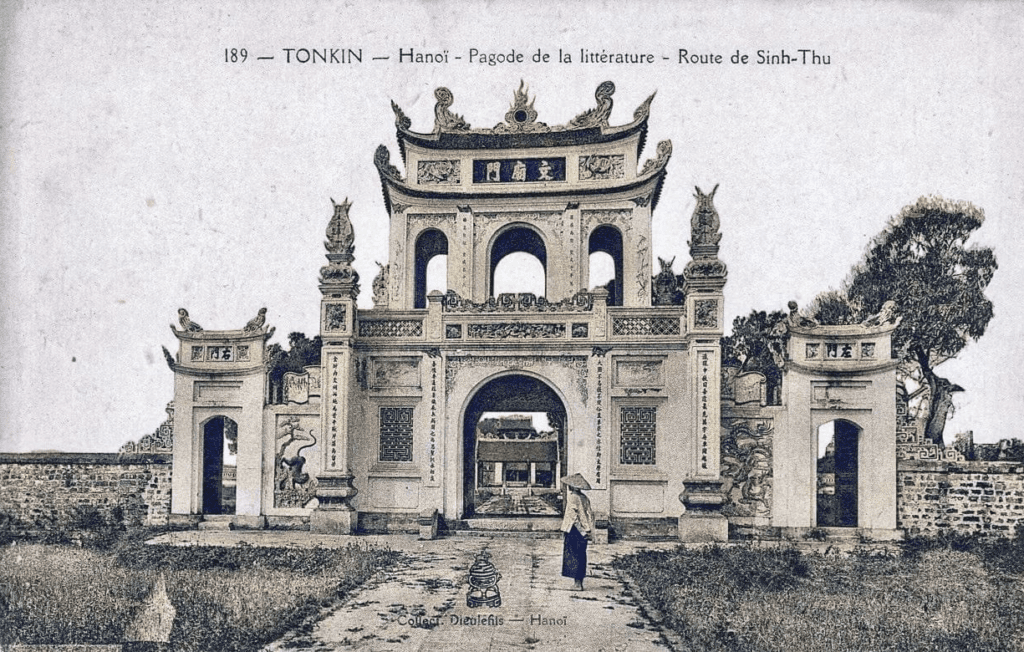

Constructed in 1070 during the reign of Emperor Lý Thánh Tông
After its construction, the temple transformed into Vietnam’s inaugural university, recognized as the Imperial Academy. This esteemed institution provided education to nobility, officials, and intellectuals in governance, literature, poetry, and philosophy. It retained its status as the nation’s foremost educational center until the early 19th century. Over time, the temple underwent various renovations, including the installation of stelae honoring scholars who studied there.
In 1842, the Imperial Academy split into separate schools for Confucian studies and broader subjects like literature, mathematics, and medicine, reflecting a significant evolution in Vietnam’s educational landscape. Today, the Temple of Literature Hanoi remains a symbol of Confucian values and the enduring significance of education in Vietnamese society.
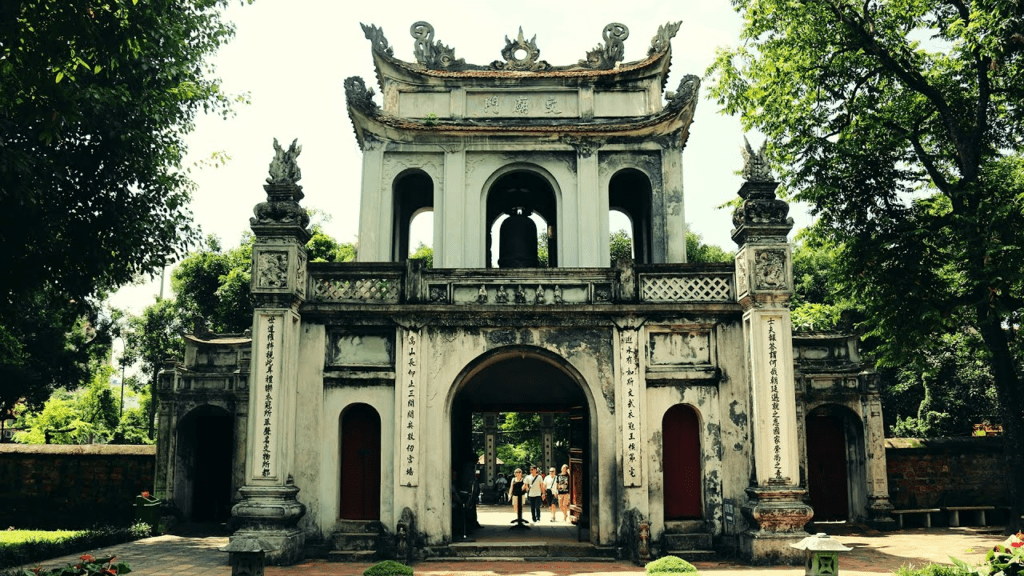

The temple comprises five courtyards, symbolizing the five core Confucian virtues: humanity, justice, propriety, wisdom, and loyalty. Notably, the stelae garden situated within the third courtyard showcases 82 stone tablets commemorating scholars who achieved the highest examination level during the Ly and Tran dynasties.


Are you unsure what to do when you’re in Hanoi? Explore >>> Hanoi Weekend Guided: what to do and where to go
3. Navigating the Temple Complex
The Temple of Literature Hanoi is expansive, requiring several hours to fully explore its courtyards and pavilions. Here are the key highlights to discover during your visit to the Temple of Literature:
Văn Miếu Môn – The Main Gate
The Van Mieu Gate refers to the outer triple-door gate, featuring a tall structure with a two-story central gate. The ground floor is spacious, while the upper floor is smaller, accompanied by a broad porch.


The Main Gate
Khuê Văn Các – The Pavilion of Constellation
In the past, Khuê Văn Các served as a venue for collecting and deliberating on outstanding literary works by scholars.
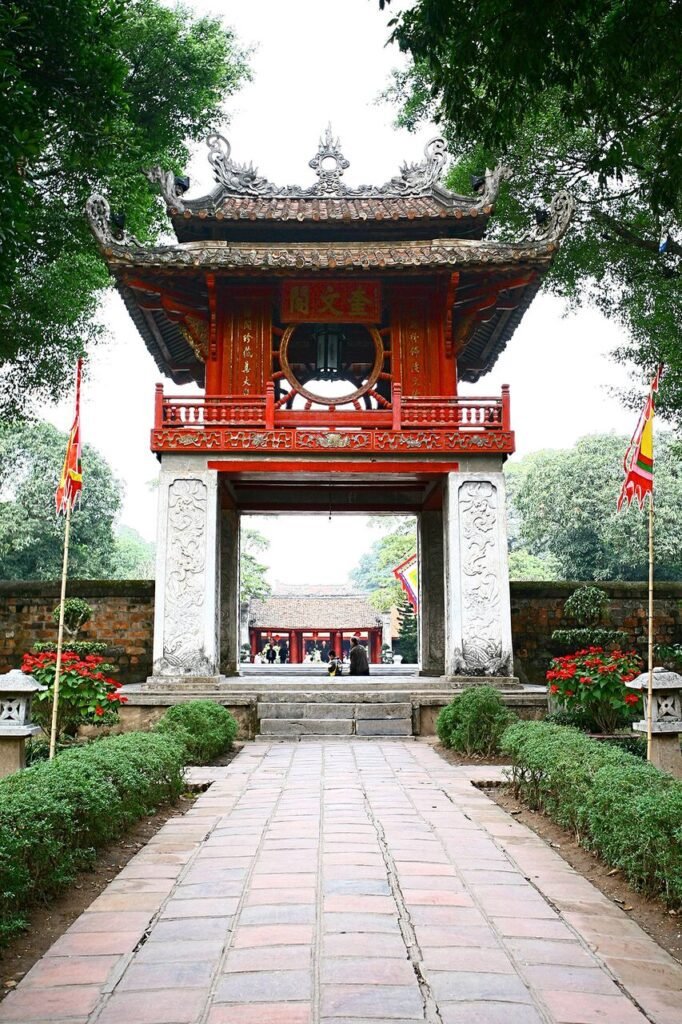

Khuê Văn Các – The Pavilion of Constellation
Đại Trung Môn – The Great Middle Gate
This entrance leads to the third courtyard, where the stelae garden is located. The architectural style of Dai Trung Mon features a three-section design with tiled roofs. It includes two rows of columns at the front and back, supported by a middle row of columns to uphold the roof.
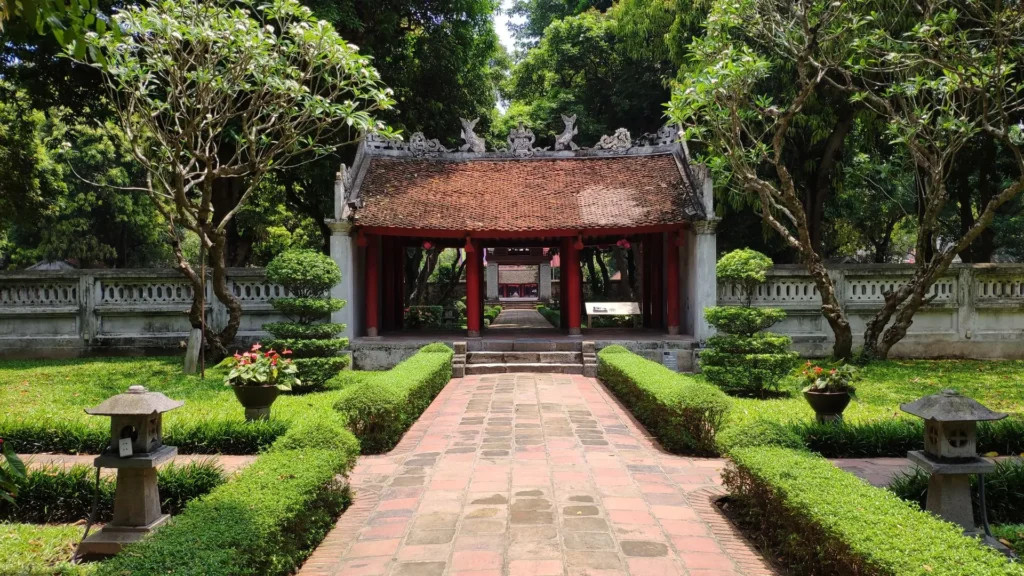

Đại Trung Môn – The Great Middle Gate
Giếng Thiên Quang – The Well of Heavenly Clarity
In Vietnamese, Thiên Quang translates to “the light of the sky.” In ancient times, people employed this metaphor to represent the essence of the universe, illuminating knowledge, enhancing moral qualities, and enriching human society. The Giếng Thiên Quang well, situated in the third courtyard, is reputed to have crystal-clear water. Scholars traditionally used it to cleanse their faces before examinations.
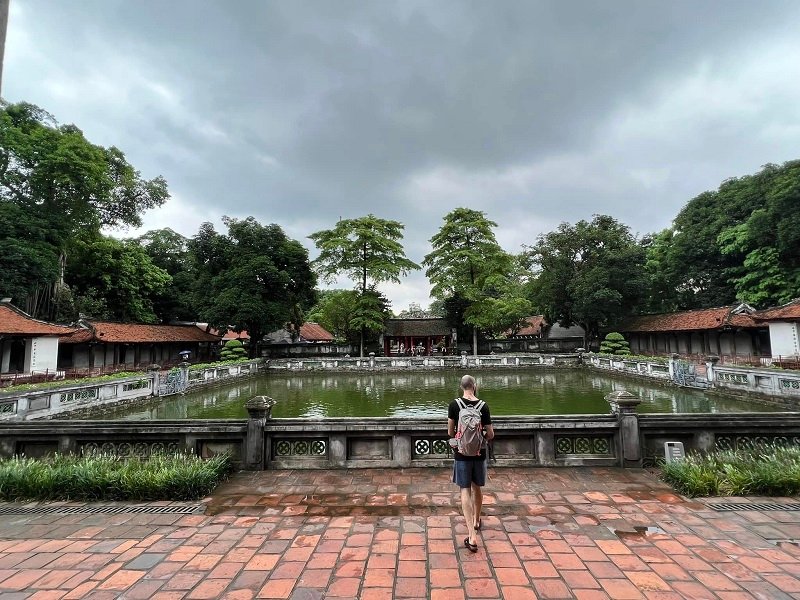

Giếng Thiên Quang – The Well of Heavenly Clarity
Vườn bia tiến sĩ – Stelae of Doctors Garden
The Stelae of Doctors Garden is adorned with dozens of stone tablets commemorating scholars who achieved the highest level of examination success. Each tablet is mounted on the back of a stone turtle, totaling 82 in number. Notably, on March 9th, 2010, UNESCO acknowledged these 82 stone steles as World Heritage material.
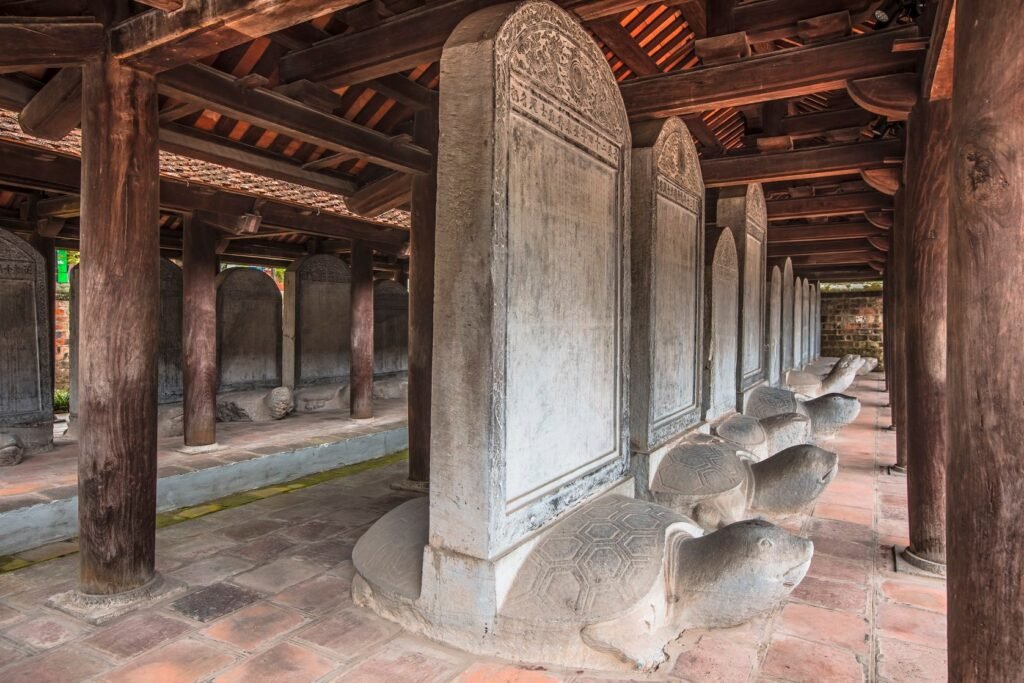

Vườn bia tiến sĩ – Stelae of Doctors Garden
Đại Thành Môn – Attained Talent Gate
Đại Thành Môn serves as the entrance to the fourth courtyard, initially designated for administrative purposes and housing the library. Its architecture features a three-room tiled roof structure, with columns on the front and rear porches, and a single row of pillars in the middle to support the roof and accommodate a two-door gate. Passing through Đại Thành Môn, visitors enter a spacious courtyard paved with red-brown Bát Tràng square bricks.
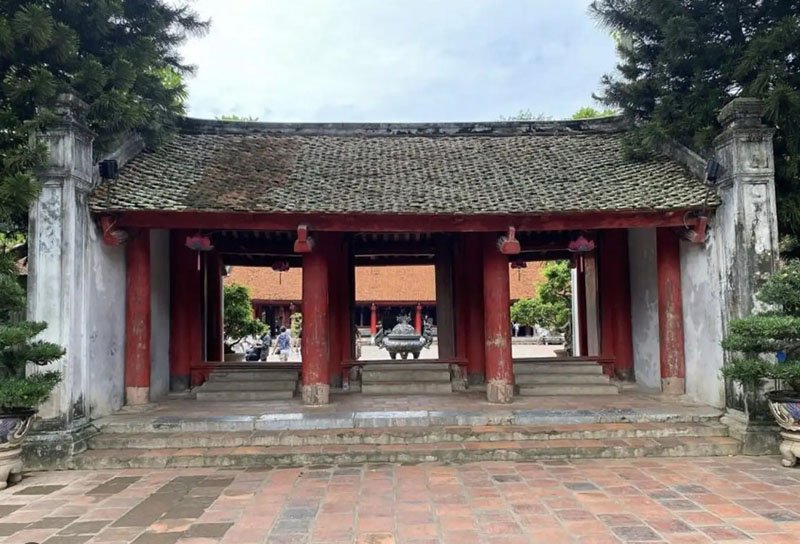

Đại Bái Đường – The Grounds of Imperial Academy
This is the temple’s ultimate courtyard, historically designated for graduation ceremonies and other significant events. Characterized by curved roofs on both sides and roofing tiles shaped like dragon scales, it exudes a solemn and ancient atmosphere conducive to worship and reflection.
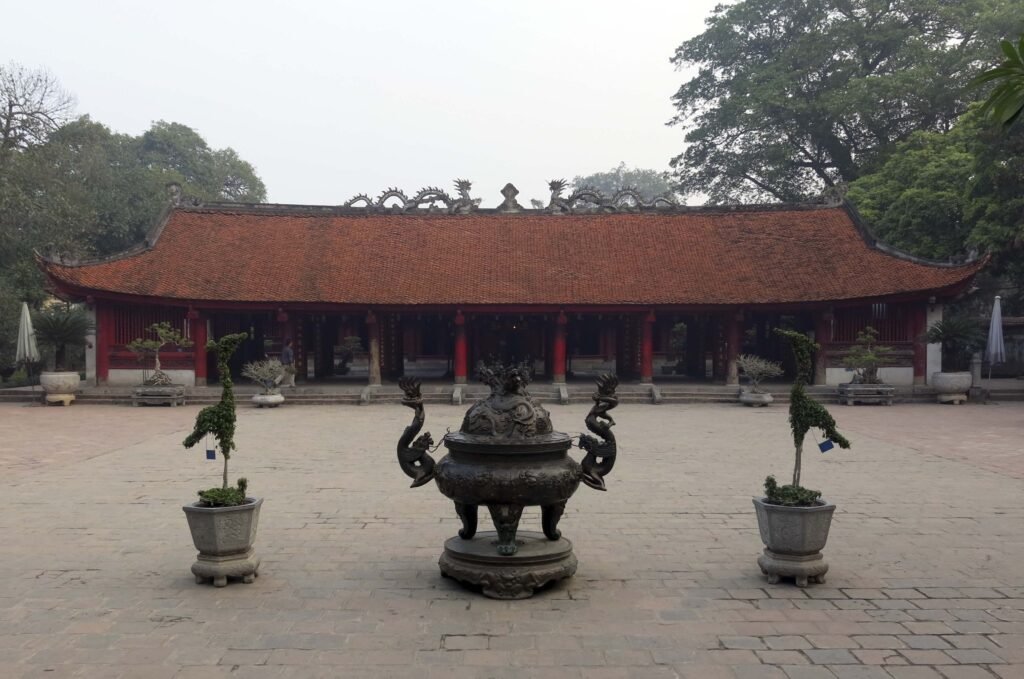

Đại Bái Đường – The Grounds of Imperial Academy
Explore the nighttime activities at the Temple of Literature >>> Your Ultimate Guide to Hanoi’s Vibrant Nightlife Scene
The Temple of Literature in Hanoi is an intriguing site providing a glimpse into Vietnam’s diverse cultural and educational legacy. Featuring stunning architectural designs, tranquil courtyards, and profound historical importance, it stands as an essential visit for all travelers exploring Hanoi. For those seeking the finest vacation experiences in Vietnam, feel free to reach out to us Sun Getaways Travel for further information.
If you’re planning to travel to Hanoi and explore the Temple of Literature, consider the following tour:




